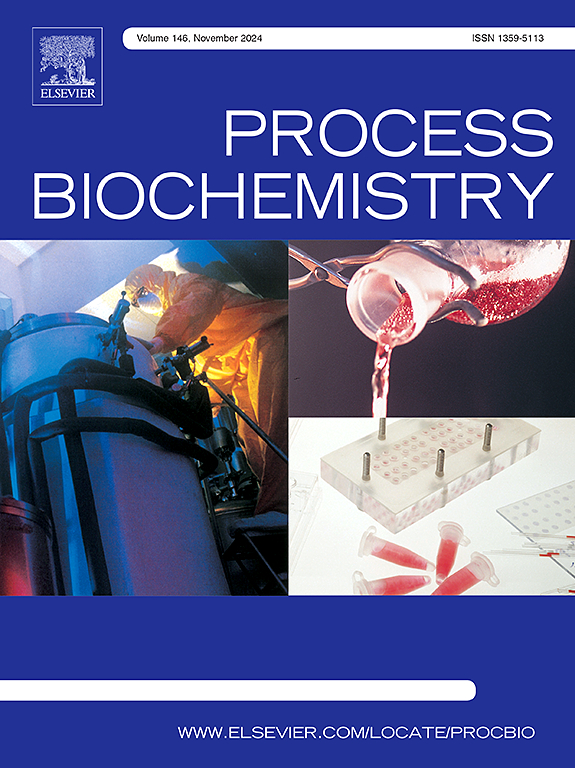Mathematical prediction of COD removal using interrelation of operating variables of the aerobic inverse fluidized bed biofilm reactor (AIFBBR)
IF 3.7
3区 生物学
Q2 BIOCHEMISTRY & MOLECULAR BIOLOGY
引用次数: 0
Abstract
The present study aimed to develop a mathematical model for predicting COD removal using the interrelation of operating variables. The model for predicting COD removal is named the dimensionless number for COD removal (DNC). The DNC was formulated based on the critical variables of the AIFBBR process for the rice mill wastewater treatment. HRT, OLR, and biomass concentration (Mb) are considered for the generation of DNC for the AIFBBR system. In the present attempt of framing such a dimensionless number DNC, many experimental runs were conducted by varying the COD strength of 0.8–3.2 kg/m3, OLR of 0.80–6.40 kg/m3.d, and Mb of 0.90–7.43 kg/m3. The developed DNC was subjected to sensitivity analysis, and biomass concentration in the system was observed to be the most sensitive among other parameters incorporated in the model. In addition, from the sensitivity analysis, it was also revealed that the removal efficiencies were observed to increase with the increase in DNC values in the COD range of 0.8–3.2 kg/m3. In addition, the plot between the reported removals from the literature on biofilm processes for wastewater treatment and DNC values yielded an R2 value of 0.79.
求助全文
约1分钟内获得全文
求助全文
来源期刊

Process Biochemistry
生物-工程:化工
CiteScore
8.30
自引率
4.50%
发文量
374
审稿时长
53 days
期刊介绍:
Process Biochemistry is an application-orientated research journal devoted to reporting advances with originality and novelty, in the science and technology of the processes involving bioactive molecules and living organisms. These processes concern the production of useful metabolites or materials, or the removal of toxic compounds using tools and methods of current biology and engineering. Its main areas of interest include novel bioprocesses and enabling technologies (such as nanobiotechnology, tissue engineering, directed evolution, metabolic engineering, systems biology, and synthetic biology) applicable in food (nutraceutical), healthcare (medical, pharmaceutical, cosmetic), energy (biofuels), environmental, and biorefinery industries and their underlying biological and engineering principles.
 求助内容:
求助内容: 应助结果提醒方式:
应助结果提醒方式:


